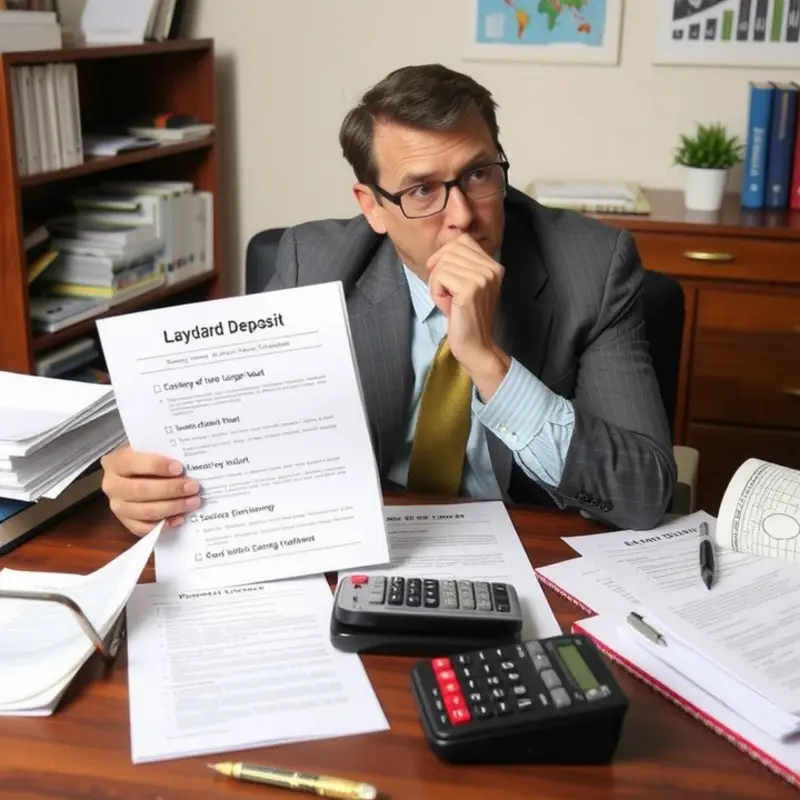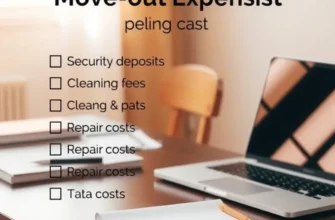Navigating the rental market can be daunting, especially when it comes to understanding financial obligations like security deposits. For many young professionals, first-time renters, students, couples, and families, the prospect of losing part or all of a security deposit can lead to anxiety and confusion. Security deposits are typically collected by landlords to cover potential damages or unpaid rent. However, knowing what is considered a legitimate deduction and what isn’t can significantly affect your finances. This guide aims to offer clarity on common security deposit deductions, ensuring you feel empowered to manage your rental relationship confidently. Whether you are moving into your first apartment, leasing a new home with your partner, or renting a space for your family, unpacking the rules around security deposits is essential. You’ll learn your rights as a tenant and, importantly, how to protect yourself from unfair deductions. Let’s dive into this topic with relatable examples and useful insights, offering you the clarity and guidance necessary for a smooth rental experience.
What Can Be Deducted: The Landlord’s Perspective

Security deposits serve as a financial safeguard for landlords, covering potential expenses arising from a tenancy. Understanding what can be deducted from your deposit is crucial to avoid surprises. Here, we’ll explore valid deductions from the landlord’s perspective, offering insights into common reasons and how renters can anticipate these deductions.
1. Unpaid Rent
A primary reason landlords dip into security deposits is unpaid rent. If a tenant vacates without settling the full rent amount owed, landlords generally deduct this amount from the deposit. This is a straightforward deduction, as the lease agreement clearly states the rent obligations.
2. Property Damage
Unlike wear and tear, property damage suggests neglect or misuse. Common cases involve holes in the walls, broken windows, or scratched floors. If a landlord finds such damage exceeding normal wear, they might make repairs or replacements and deduct these costs from the deposit. Knowing the difference between damage and normal aging is beneficial. A guide on handling apartment water damage might also help you avoid certain issues that lead to deductions.
3. Cleaning Costs
At the lease’s end, the property should be returned in a clean state. Failure to do so might mean cleaning fees could be deducted. This often covers deep cleaning to bring the property back to its original condition for the next tenant. Remember, if cleaning fees are necessary without the landlord’s customary cleaning measures, it could be seen as a valid deduction.
4. Broken or Missing Items
If any items listed in the inventory are missing or broken, landlords often replace them and deduct the costs. This includes installed appliances, furniture, or amenities provided with the rental. Always inspect the property at the start and end of your lease to account for such items.
5. Lease Violations
Certain lease violations, such as unauthorized pet ownership or modifications without permission, can result in deductions. The costs associated with remedying these violations, such as repairing unauthorized changes, will likely reduce your deposit.
Landlords apply these deductions not to penalize, but as necessary steps to prepare the property for future tenants. Your goal as a tenant is to understand your lease and treat the property with care, helping ensure your deposit remains intact.
How to Challenge Unfair Deductions

If you believe a deduction from your security deposit isn’t justified, taking action is crucial. The first step is understanding why the deduction was made. Review the lease agreement and the itemized list of deductions provided by your landlord. Compare these with the property’s condition report created at the time of your move-in. This will help identify if the deduction aligns with what was agreed upon.
Communicating Effectively
Once you’ve gathered this information, it’s time to communicate with your landlord. A written approach is often best. Draft an email or letter that clearly outlines your concerns. Start by addressing the deduction in question, citing specific terms in the lease that support your stance. Be sure to maintain a polite and professional tone throughout. This establishes a constructive path for dialogue rather than conflict.
Include all relevant documentation in your message. This can include photographs, the initial move-in inspection report, and correspondence related to any repairs agreed upon but not carried out. Visual evidence is powerful when disputing claims of damage or excessive wear.
Understanding Local Laws
Knowledge of local rental laws can provide significant support for your case. These laws often set parameters for what landlords can charge for normal wear and tear versus actual damage. Some states have clear guidelines on things like carpet lifespan or paint duration, designed to prevent unjust deductions. Utilizing a local rental guide can help you align your dispute with regional expectations, enhancing the legitimacy of your claim.
Legal Recourse Options
If communication doesn’t resolve the issue, consider pursuing legal recourse. Small claims court is an option if the amount contested is within the court’s monetary limits. Before heading down this path, it’s wise to send a formal notice to your landlord—this often encourages last-minute negotiation. Mentioning the possibility of legal action can pause or even reverse an unfair deduction.
Additionally, some areas offer tenant-landlord mediation services. These are often quicker and less expensive alternatives to court, providing an environment for both parties to express concerns and reach a mutual agreement.
Staying Organized
Throughout this process, staying organized is crucial. Keep copies of all communications, maintain a file with all relevant documents, and log all interactions with your landlord. This organized record-keeping can serve as a comprehensive source of evidence if your dispute escalates to a legal setting.
Challenging unfair deductions requires attention to detail and perseverance. By compiling documentation, understanding the law, and maintaining open communication, you can effectively advocate for the rightful return of your deposit.
Final words
Understanding security deposit deductions is crucial for anyone stepping into the rental market. By knowing what expenses your landlord can legitimately deduct and how to fight against unfair charges, you empower yourself to take control of your rental experience. Always maintain clear communication with your landlord, document your apartment’s condition before moving in, and familiarize yourself with local tenant laws. This proactive approach will help you guard your finances and ensure that your rental journey is a positive one. Keep these insights in mind to ensure your next apartment feels like home without unnecessary stress regarding security deposit deductions.









